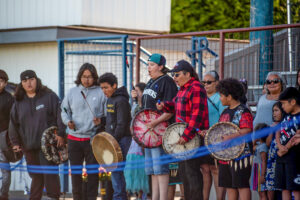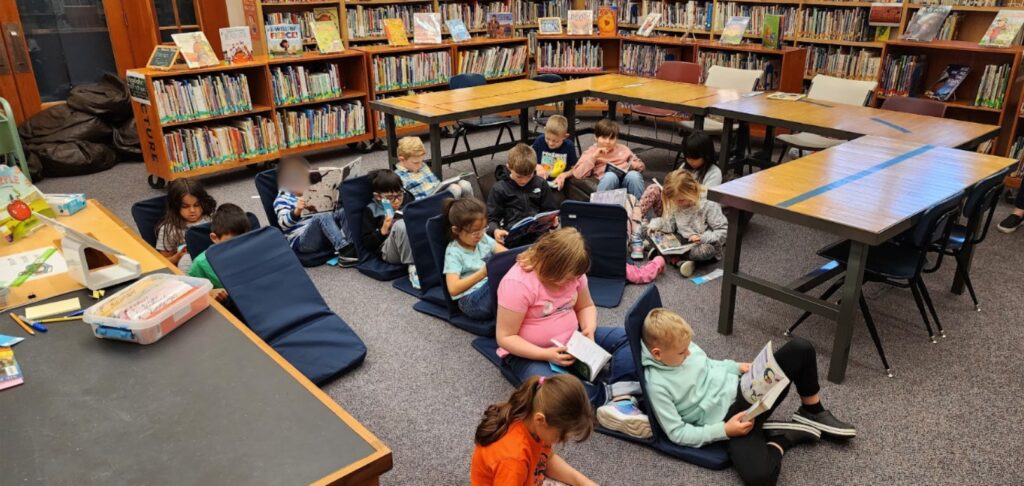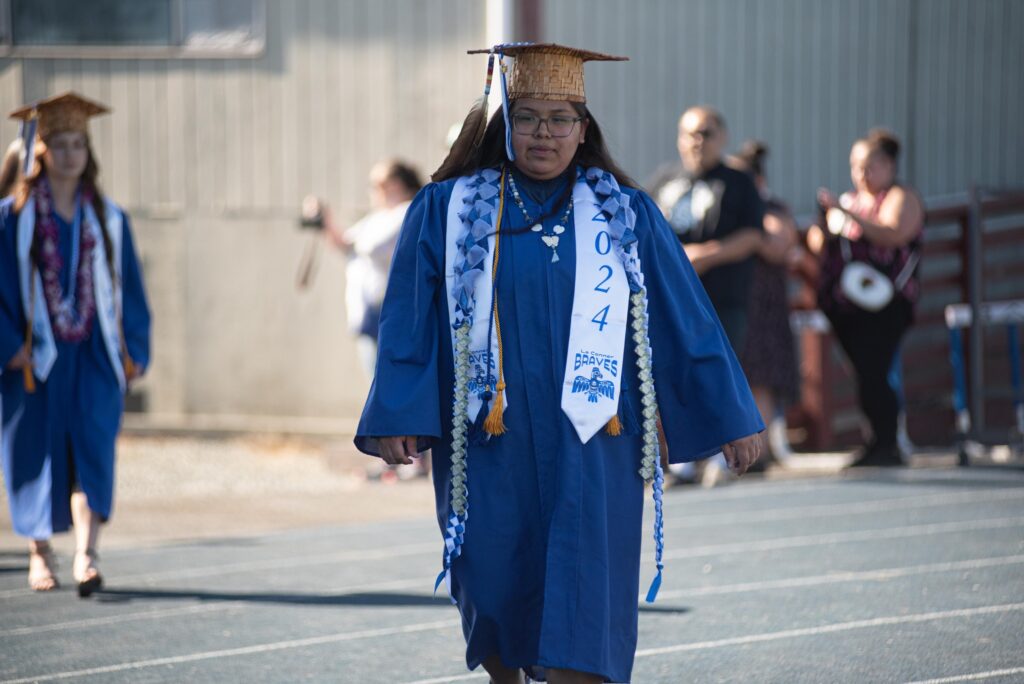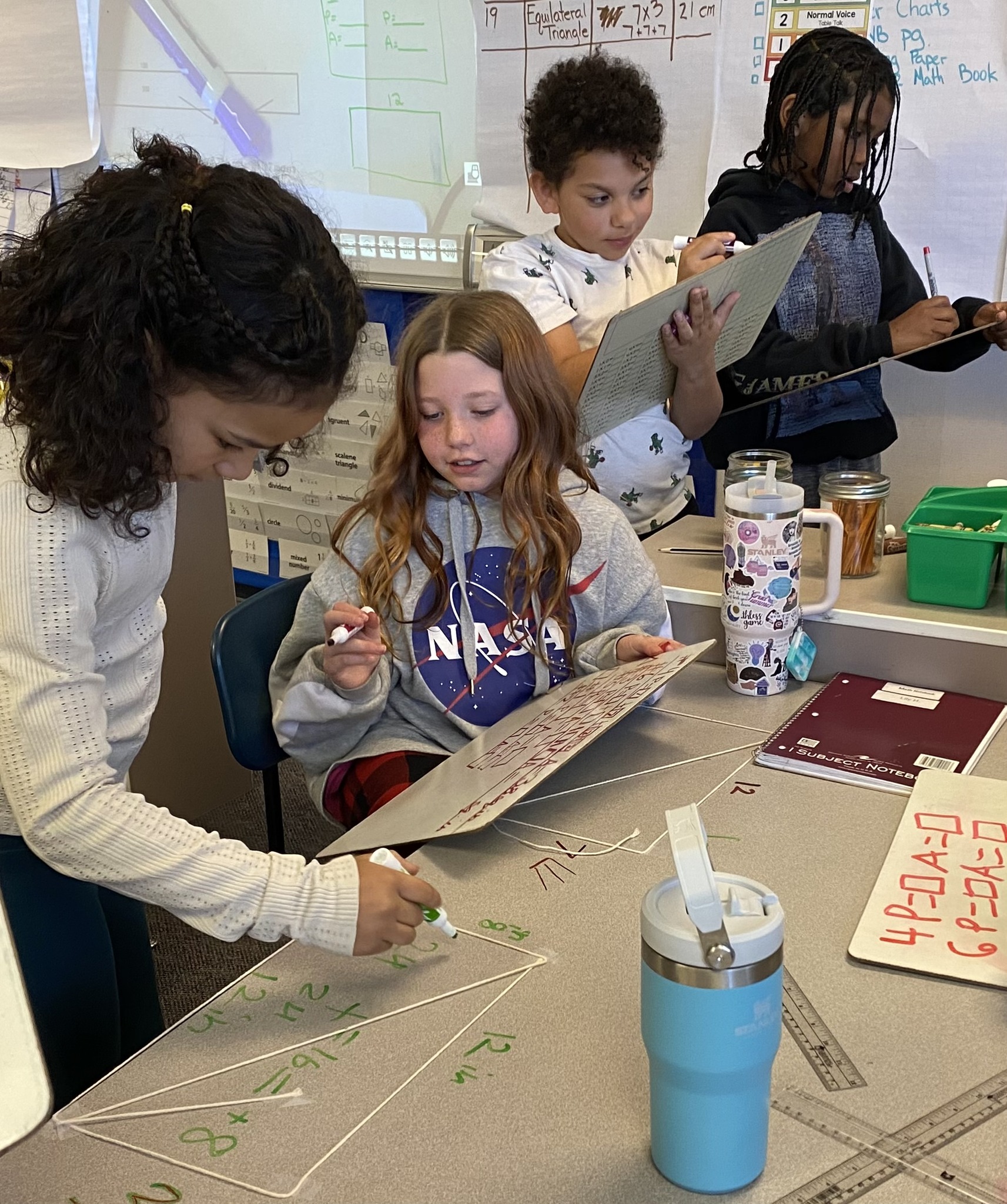 Big changes added up to big results for students’ math achievement in the La Conner School District.
Big changes added up to big results for students’ math achievement in the La Conner School District.
A new curriculum, new assessment platforms, Professional Learning Communities, and other changes moved student achievement from 30% at grade level in the fall to 50% at grade level in spring during the 2022-23 school year.
This progress and the board’s role in supporting it was a key component of their successful application for the Washington State School Directors’ Association’s Boards of Distinction program. The La Conner School Board was named 2023 Board of the Year for Small Districts.
“We couldn’t keep doing things the way we were doing them if we wanted to close the achievement gap,” said Susie Deyo, La Conner School District board president.
New Programs Made Math the Priority
In September 2022, the school board and district staff supported a focus on math from several directions:
- Implemented new math curriculum in all grades: Bridges in elementary grades, i-Ready at the middle school and Reveal for high schoolers.
- Selected a Teacher on Special Assignment to work with all math teachers and support their transition to the new curriculum.
- Added “What About Math?” as a monthly board meeting agenda item. Directors discuss curriculum adoption, test results, and student and teacher feedback.
- Hosted a Math Night to engage families and share the students’ new enthusiasm for math.
- Launched late-start Wednesdays for Professional Learning Communities. Staff use the 70 minutes each week to identify priority standards and align them to learning targets, assess student progress and adjust instruction.
- Introduced Universal Design for Learning (UDL) and Mastery- Based Learning (MBL) approaches concurrently. UDL focuses on student engagement and choice, using multiple means to teach concepts. MBL connects every lesson to the standards. In both approaches, students have multiple means and opportunities to meet the standards.

The multiple platforms help teachers work with students’ various learning styles.
“We want to recognize the teachers for learning the new curriculum and investing time in new teaching styles,” Deyo said. “They’re doing the hard work. They’re with the kids every day, ensuring every student is successful.”
Jeremy Wilbur, school board vice president, said implementing the new math curriculum has been a game changer.
“Kids have expressed how much fun math is,” he said. “That’s something we have not heard in this district for a very long time.”
Interactions Matter in a Small Community
Deyo said teachers feel reinvigorated, too. That’s the type of feedback board members receive in their listening sessions with staff. Two board members meet with staff to hear their concerns, ask questions and build relationships.
Individual board members also have lunch with five students at different grade levels. The Q&A sessions provide valuable insights and help students understand board members’ roles.
“We meet with middle school and high school students twice a year, and now we hear them say, ‘We want to do well in math,’” Deyo said.
Community relationships also are vital in La Conner. Most of the school board members are longtime residents of this small town and interact with people at sporting events and elsewhere. There’s also a deep legacy with the Swinomish Tribe.
Nearly 40% of La Conner’s students are Swinomish Tribe members. To improve support and engagement for Native American students and families, the district formed the Native American Parent Advisory Council (NAPAC) in June 2022.
Advisory council members include families of Native American students enrolled in La Conner schools, a district staff member, a district administrator and at least one student representative.
NAPAC meets monthly to discuss grant opportunities and how to use the funds. They also explore ways to improve communication with families, identify students’ needs and incorporate cultural activities. The group’s first bingo night and information fair in April was well attended.
Relationships outside the La Conner boundaries have helped board members, too. Deyo meets with school board presidents from other Skagit County school districts. Superintendents sometimes join the monthly conversations, where participants learn from each others’ recent highlights and challenges.
Focused Effort Brings Swift Success

La Conner’s success started with school board members setting specific, measurable goals for improving student achievement.
“The board was cohesive; we knew what we wanted to do to help kids catch up,” Deyo said. “It’s been a multi-year event.”
The new curriculum jump-started enthusiasm for math among students and teachers. Elementary grades dedicated 90 minutes each day to learning math.
Within one year of implementing the new math curriculum, the district reported the following results:
- The opportunity gap in math dropped from 70% to 50%.
- Three times more students finished the year at grade level compared to the start of the school year.
- 35% of students reached 80% of their stretch target goals .
- 38% of students were at grade level against state standards, up from 13%.
Success in math spilled over to other areas. Elementary school daily attendance grew to 93%, up from 87% earlier in the year. Also in the elementary grades, the opportunity gap for reaching state standards in reading improved from 72% to 49%, and in math the gap went from 72% to 49%.
Following the successful math acceleration, La Conner district leaders are putting energy toward the science curriculum.
“We’re all very passionate about what we’re doing and are proud of the impact we’ve made in areas that needed to be addressed,” Deyo said.
About this Article
This article appeared in the Summer/Fall 2024 issue of WSSDA Direct. See more great stories and all the latest issues at wssda.org/Direct.
